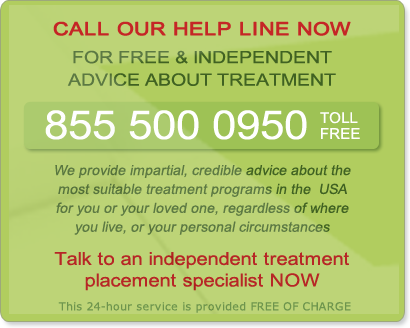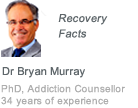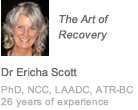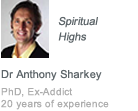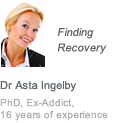LSD Addiction
LSD Addiction has been commonly noted since the middle of the heady 1960’s. LSD, or Lysergic Acid Diethylamide to use the correct nomenclature, has a short but very chequered history since its initial creation in the mid 1930’s. LSD has been used as a medicine, a truth serum, and a consciousness expanding aid as well as being abused by the literary, the student and the military in almost equal measure. There are as many myths surrounding LSD as there are addicts and there is still an ongoing argument as to whether it is physically addictive or not.
LSD – Origins, uses and legal status
LSD was first created by Albert Hoffman in the Sandoz laboratories in Switzerland in 1938 but he did not realize the psychedelic properties of his creation until 1943 where he famously absorbed some of the substance through his fingertips and began to feel the effects of the drug. Hoffman then continued to experiment on himself on the legendary ‘Bicycle Day’ where he ate a small quantity of the drug to determine the active dose and had to be taken home on a bicycle by his assistant (motor vehicles were not licensed due to wartime restrictions) and experienced all of the classic symptoms of LSD usage.
The drug was hailed as a potential psychiatric tool and experiments were held in finding treatments for psychosis, paranoid schizophrenia and even alcoholism. Aldous Huxley, the noted British writer, used LSD as a method of enhancing creativity and the CIA used the drug in an attempt to create a truth drug as well as a method of brainwashing foreign agents.
LSD was also picked up by Dr Timothy Leary who proposed a free society where LSD would be used to enhance the consciousness of all his adherents and in conjunction with Ken Kesey, writer of ‘One Flew Over The Cuckoo’s Nest’, they started the so-called ‘Acid Tests’ where hundreds of young Californians were dosed at a time in uncontrolled circumstances. Made illegal in California in 1966, LSD is now banned and proscribed around the world.
It is classified as a Schedule 1 substance in America – a drug that has:
- A high potential for abuse
- Has No current medical use in treatment in the US
- No accepted safety standards exist even under medical supervision
The penalties for possession are in line with those for heroin and crack cocaine.
LSD addiction: usage and effects
LSD dosage needs only to be very small for a catastrophic reaction in the user. It can be taken:
- LSD can be taken in pill form but it is often supplied as a liquid that has been soaked into blotting paper. The blotting paper is then sucked by the addict.
- It is sometimes dissolved into the glue on postage stamps; the stamps are then licked by the addict for ingestion.
- Absorption through the skin – as Hoffman inadvertently discovered, LSD can be unknowingly ingested through the pores of the skin.
- In eye drops – there have been occasions where the drug has been dissolved in suspension in eye drops and then absorbed by the addict through tear ducts leading from the eyes.
LSD’s main effects are emotional and sensory, affecting the serotonin receptors in the brain and triggering emotional effects that range from complete calm and a euphoric state to a feeling of abject paranoia and with very rapid transitions from one emotional state to another.
The sensory effects can be:
- Synaesthesia – literally hearing images and seeing sounds
- Visions where shapes and colors change as movement is seen in objects
- Auditory hallucinations where sounds change tempo, timbre and volume
The emotional effects are more drastic:
- Euphoria and a sense of well being; or
- Anxiety and paranoia
- Disassociation with the hard world – imagining that the addicts physical being is in a different plane to the world and divorcing dangerous movements – the addict may not see a high drop to the hard world below or may even experience being burnt as having waves washing over the skin
Good or bad ‘trips’, as a high from LSD are known, are memorable. The trips appear to make permanent changes in the brain, and the experiences of a bad trip have been known to leave the addict in a permanent state of fear and paranoia. An LSD ‘trip’ can last anywhere between 4 and 12 hours and the length of the effects and the depth are often unpredictable.
LSD addicts do experience some degree of tolerance to the drug but it is believed that the tolerance is more in line with expectations of new experience than the body’s ability to absorb greater amounts of the drug.
Profile of an LSD addict
LSD addicts are typically fairly intelligent and have the time to invest in the drug. It is of little interest to the users of heroin or methamphetamine as it does not give the addict the effect of blotting out feelings but rather emphasizes those feelings and situations. Nearly 10 percent of high school students are believed to have used LSD at least once and it is estimated that over 20,000,000 people in the States aged over 12 have used the drug at least once.
Treating LSD addicts
LSD does not have any physical addiction withdrawal symptoms so it is necessary to treat the addiction in different ways to other drugs. The help required is more on a psychological and emotional plane and the physical aid is primarily around building the addicts’ confidence through a healthy body. Frequent and continued use of LSD can cause damage in various sections of the brain, and habitual users may appear to be ‘absent’ a lot of the time. They may take a long time to construct a sentence, and drift out of conversation for minutes at a time. LSD addiction also causes users to retreat from the real or hard world, so they become incapable of looking after even the most basic of day to day tasks. Frequent flashbacks or memories of LSD trips interrupt the addict’s ability to function. The main aids to treating LSD addiction are:
- Psychotherapy – it is necessary to drill down through the layers of experiences under the LSD addiction to find the original mentality that has been clouded by the addiction
- Behavior modification to teach the LSD addict avoidance techniques to help becoming addicted to psychedelics again and to give them other activities to replace the time that would have been lost on the drug
- Yoga and meditation help the addict focus on what a well body and mind feel like and to give the addict goals to achieve
- Counseling is often a great help for the addict who was using the drug to overcome depression or other mental impairments
A sympathetic environment where the LSD addict can feel safe and secure, where they have the room and time to recover from the effects of the drug and will be cared for by those who understand the nature of the battle they have on their hands will often help a longer term recovery without relapses and recidivism. Because of the likelihood of flashbacks residential care is particularly apt for LSD addiction sufferers. The medical knowledge that professionals have can make all the difference, and experienced staff members will recognize and react appropriately to the sometimes strange behavior exhibited by LSD addicts.
For many suffering the consequences of LSD addiction recovery is real and attainable, but sadly, for a few, the amount of damage to the brain caused by repeated use of the drug cannot be repaired enough for them to live independently or even with support in our open society. For these damaged people full-time and permanent hospitalization may by necessary. The more often an LSD addict uses the drug the more damage to the brain that cannot be repaired they are potentially causing – delay in seeking treatment or help is not an option. If you are aware that someone you care about is using LSD get help, and get it fast.


